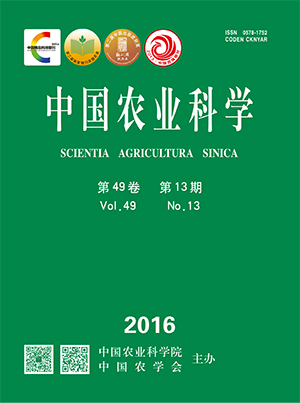-
QTL Mapping of Self-Compatibility, Silique and Seeds-Associated Traits in Brassica rapa
- SUN Qian-qian, WU Jian, CHENG Feng, WANG Xiao-wu, LIANG Jian-li, SHEN Shu-xing
-
Scientia Agricultura Sinica. 2016, 49(13):
2449-2458.
doi:10.3864/j.issn.0578-1752.2016.13.001
-
 Abstract
(
786 )
Abstract
(
786 )
 HTML
(
3 )
HTML
(
3 )
 PDF (4892KB)
(
506
)
PDF (4892KB)
(
506
)
 Save
Save
-
References |
Related Articles |
Metrics
【Objective】Brassica rapa is an important oil crop in the world. Higher seed yield with good quality is one of the important agronomic traits. Due to the self-incompatibility characteristic of most B. rapa, it is difficult to purify breeding materials and realize maximum yield of this plant, since the seed yield of this crop is influenced by the silique related traits, such as the number of pods, number of seed per silique. Besides, the seed quality is closely related to seed color. The aim of this research is providing an important genetic basis for breeding self-compatibility varieties or inbred lines of B. rapa and genetic modification of yield with quality in this crop.【Method】The Recombinant Inbred Lines (RILs) population derived from the cross between genotypes R-O-18 with well self-compatibility and L58 with weak self-compatibility consisting of 117 lines was used to conduct QTL analysis. Based on previous linkage map generated by 372 InDel markers, the Interval Mapping (IM) method was used to survey a total of nine traits as follows: compatible index of flowering time (CIFT), pods rate (PR), silique length (SL), silique beak length (SBL), silique length/silique width (SL/SW), silique beak length/silique length (SBL/SL), number of seed per silique (NSPS), thousand seed weight (TSW) and seed color (SC).【Result】RILs population in the 9 self-compatibility, siliques and seeds-related traits showed continuous variation and variation margin, showed normal or partial normal distribution, with typical quantitative genetic characteristics. CIFT showed an extremely significant positive correlation with PR, SL, SBL, SL/SW, NSPS, and TSW, where the correlation coefficient between CIFT and NSPS was the largest, reaching 0.8487; and several other traits in order of size (high to low): TSW, PR, SBL, SL, and SL/SW. NSPS and TSW presents a very significant positive correlation with PR, SL, SBL, SL/SW, NSPS also had a significant positive correlation with TSW (0.6477). The PR, SL and SBL, SL/SW also showed a significant positive correlation. SBL/SL showed a negative correlation and a significant positive correlation with SBL, but not correlated with other traits. A total of 12 QTL loci were detected and the major ones were located on chromosome A09, and totally 10 QTLs explained phenotypic variation of more than 10%. Two QTLs controlling CIFT were located on chromosome A09, accounting for the phenotype variation 13.1% and 16.7%, respectively. Six QTLs related to silique were located on A06, A09 and A10, respectively, explaining phenotypic variance of 13.4%-17.7%. Furthermore, four seed-associated QTLs were located on chromosome A02, A05, A06 and A09, respectively, with QTL effects varied from 7.9% to 42.1%, of which the QTL located on A09 was the major QTL for SC, as it accounted for phenotypic variance of 42.1% and it had additive effect value of 1.22. 【Conclusion】A total of 12 QTLs which control self-compatibility (2), siliques (6) and seeds-related traits (4) were detected. For the two self-compatibility QTLs, they are different with the S locus identified previously, which indicated that the two loci detected in this study may be the non-major QTLs. Additionally, one QTL of the 4 seeds-related QTLs is the major QTL of this trait.









